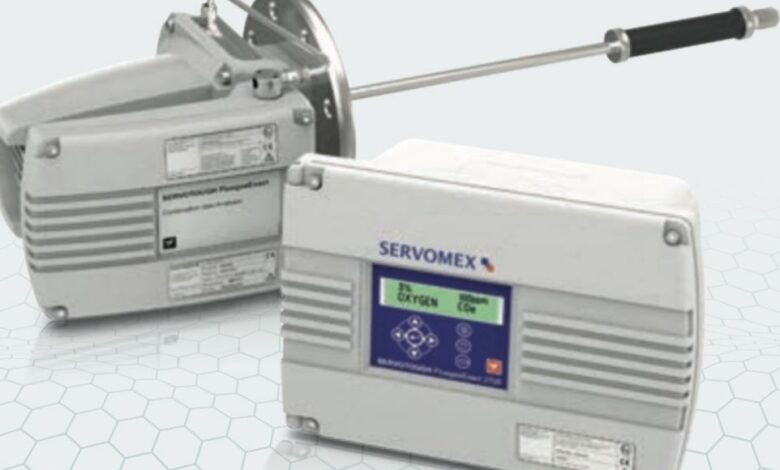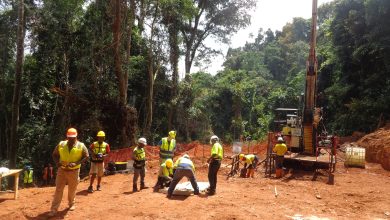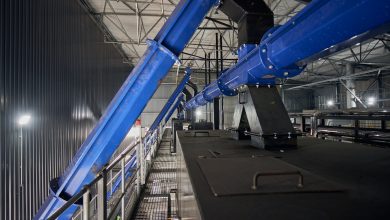
Process analysers for effective combustion in fired-heaters
Complementary usage of analysers for optimal combustion
The complementary use of Zirconia (zirconium oxide cell technologies) and Tunable Diode Laser (TDL) analysers in some sites can enable fired heaters to achieve efficiency, enhance safety and reduce emissions.
Organisations in mining, power generation, oil and gas, and petrochemical industries have to ensure that their fired heaters achieve efficient combustion. The sure-fire approach that engineers and plant operators employ is getting the appropriate balance in the oxygen–to–fuel ratio, known as Stoichiometric combustion. The cardinal rule is: You can only control what you know. And with respect to fired heaters, the use of gas analysis technologies (gas analysers) has proved effective.
At the outset, it has to be acknowledged that cherrypicking suitable gas analysis technologies, with dozens of product brands out there in the market, is akin to searching for a needle in a haystack. Handily, there are huge volumes of literature that process plant engineers can refer to for guidance when choosing technologies relevant to their respective needs.
Rhys Jenkins, the Product Manager at Servomex, has compiled a detailed analysis on how to use proven technologies to optimise the process of combustion in fired heaters. His review – A comparison of gas analysis technologies available for efficient and safe combustion in control fired heaters – is rich with relevant information. In a nutshell, he posits that technologies do not provide a ‘one-size-fits-all’ solution, a complete replacement of the available ones, but rather a complementary technique to allow for closer monitoring with greater accuracy and reliability. In the article’s context, he explores how Zirconium Oxide technologies and Tunable Diode Laser (TDL) analysers can be used in monitoring oxygen and fuel mix to reach Stoichiometric combustion levels.
The need for accurate and reliable technologies
At the outset, by first examining the challenges that incomplete combustion poses to fired heaters it is much easier to comprehend the necessity for adopting proven technologies. Typically, fired heaters notoriously consume large quantities of fuel, produce large quantities of Nox emissions, and pose a potential safety hazard to employees and the plant (potentially dangerous explosion – low-oxygen, fuel-rich conditions).
Understanding the delicate process of combustion control
Thus, to manage these challenges, an understanding of the basic aspects of the complex and delicate process of combustion control is needed for the correct selection and effective use of the monitoring technologies. Mainly, these are the reduction of excess air and negative process control conditions.
- Reduction of excess air to low air, increasing the excess air
There can be downsides at both extremes – reducing excess air and increasing air.
In the pursuit of reducing excess air, unintended consequences could be encountered. Low air could create unsafe operating conditions. This is particularly when products of combustion contain unburned fuel which is wasted and passed into the atmosphere. The review elaborates this point: “Incomplete combustion at less than 10-15% excess air or 2-3% oxygen in the flue gas – pockets of carbon monoxide, hydrogen and methane – result in localised hotspots, as they ignite and produce higher emissions of gases such as methane.”
On the other hand, increasing air levels when incomplete combustion is detected can also backfire. This is especially when complex interactions of oxygen and unburned fuel can lead to flammable mixtures igniting further down from the burners.
- Negative process control conditions
Besides, the air-to-fuel ratio, there are negative control conditions that could impact combustion. Mainly, these include: excess heat at the process tubes, which causes damage and leaks; carbon deposits on the process tubes, which decreases efficiency and heat transfer; and, in extreme cases, potentially dangerous combustion events can occur.
Striking a balance
Given the abovementioned challenge, a point where a balance can be reached should be sought. Notwithstanding the abovementioned risks, there are significant benefits to be had from operating fired heaters at Low Excess Air (LEA) levels. Usually, at that point, the lowest level of fuel is consumed and the products of combustion are cooled the least by the unused excess air.
Significant cost savings and environmental emissions requirements
At the LEA level, the cumulative gains in fuel cost savings in tens of thousands of dollars from several combustion processes are significant. Additionally, controlling air levels just above incomplete combustion enables the production of the cleanest burn, helping plants to meet environmental emissions requirements. In this context, a competent LEA combustion process runs at approximately 2.5-5% excess air or 0.5-1% oxygen above the point at which unburned fuel in the form of carbon monoxide starts to break through. This can be maintained and controlled at the most efficient running point.
Technologies to monitor unused oxygen
When exploring suitable means to monitor the level of unused oxygen in fired heaters, one thing to bear in mind is no technology one-size-all. This is not the least Zirconium oxide cell technologies and Tunable Diode Laser (TDL) analysers. Each of them has distinct merits and demerits. Hence, they can be used as complementary techniques, where applicable. They are available as portable gas analysers and some highly specialist fixed gas analyser applications.
- Zirconia
Zirconia measures oxygen on a ‘wet’ basis and has two applications that are worth highlighting. Firstly, the technology enables the sampling and direct analysis of the hot, wet and often corrosive products of combustion. Secondly, as inherent partial pressure measurement, it allows the percentage oxygen measurement to be made independent of temperature and pressure.
Generally, Zirconia analyzers are split into two types: close–coupled extractive analyzers and in–situ analysers. Commonly used in process control are the close-coupled extractive analysers. A spectroscopic absorption measurement technique, TDL consists of a tunable diode laser light source, transmitting optics, an optically accessible absorbing medium, receiving optics and a detector. They are ideal for in–situ cross stack measurements, as there is no physical or mechanical interaction with the process, besides molecular absorption.
Typically, a cross-stack system consists of the laser emitter module and receiver mounted across the process pipeline or flue stack. TDL counts molecules (or number density of molecules) that fall within the beam.
Comparison between TDL and Zirconia
- Measurement
TDL’s main disadvantage is that, for oxygen analysis, it offers an average path measurement across all burners. On the other hand, as they can sample a single point, zirconia analysers measure a particular section of burners.
- Purchase and installation costs
A TDL does not come cheap. Its purchase and installation costs are between three to five times of a typical zirconia installation. While multiple zirconia analysers can be purchased for an equivalent amount that can be deployed for both an average measurement and the single-point measurements for burner diagnostics.
- Susceptibility to environmental factors
TDL is susceptible to environmental factors. These include but may not be isolated to path length variation, window purge gas effects, optical interferences and temperature and pressure changes.
- Reading errors
For a WMS instrument, an error of approximately +/– 5% of reading is normal, while for a DAS measurement, the error can be considerably higher.
- Operational and maintenance
ADL requires the fitting of optical windows between the source and the process, detector and process. Depending on process gas velocity, this makes operation and maintenance prohibitively expensive when compared with zirconia techniques.
Areas where TDL technologies have the edge
- Monitoring carbon monoxide
Respected for fast response and specificity, TDL enables carbon monoxide breakthrough to be monitored accurately. Due to this, it can act as a secondary and complementary measurement to the oxygen measurement. In this way, it can enable LEA optimisation as well as introduce a further level of process safety-related diagnostics.
- Enhanced, cost-effective for burner efficiency
TDL can provide the catalytic measurement of carbon monoxide combined within the same analyzer as the zirconia oxygen measurement. This can result in enhanced, cost-effective diagnostic capabilities for burner efficiency.
- Flameout protection
In fire heater processes, TDL can be integrated into flameout protection. This is particularly the measurement of methane in natural gas burners. Installing TDL can help in the quick detection of a burner flameout. In this way, it can enable greater flexibility and response to controlling and shutting down processes.
- Monitoring carbon monoxide and moisture levels
Further, a single TDL monitor for methane optimised measurement can monitor carbon monoxide and moisture levels.
- Maintenance and performance
The general advantage of TDL technologies is that they are highly attractive in both maintenance and performance.
Complementary techniques in some sites
All in all, for optimal analysis of a fired heater‘s process control to achieve efficiency, enhance safety and reduce emissions Zirconia and TDL technologies can be used on some sites. Some among them are particularly in the following scenarios:
- Safety
For LEA operation, the installation of a combustibles sensor combined with the zirconia analyser is a very cost-effective choice to support process safety procedures and site safety regulations.
- Levels of carbon monoxide and water
For oxygen, levels of carbon monoxide and water within the radiant section can be effectively measured by TDL in conjunction with a zirconia analyser.
- For flameout protection and diagnostics
For flameout protection and diagnostics, and added combustibles breakthrough analysis, an additional combined CO/methane TDL can be used.






